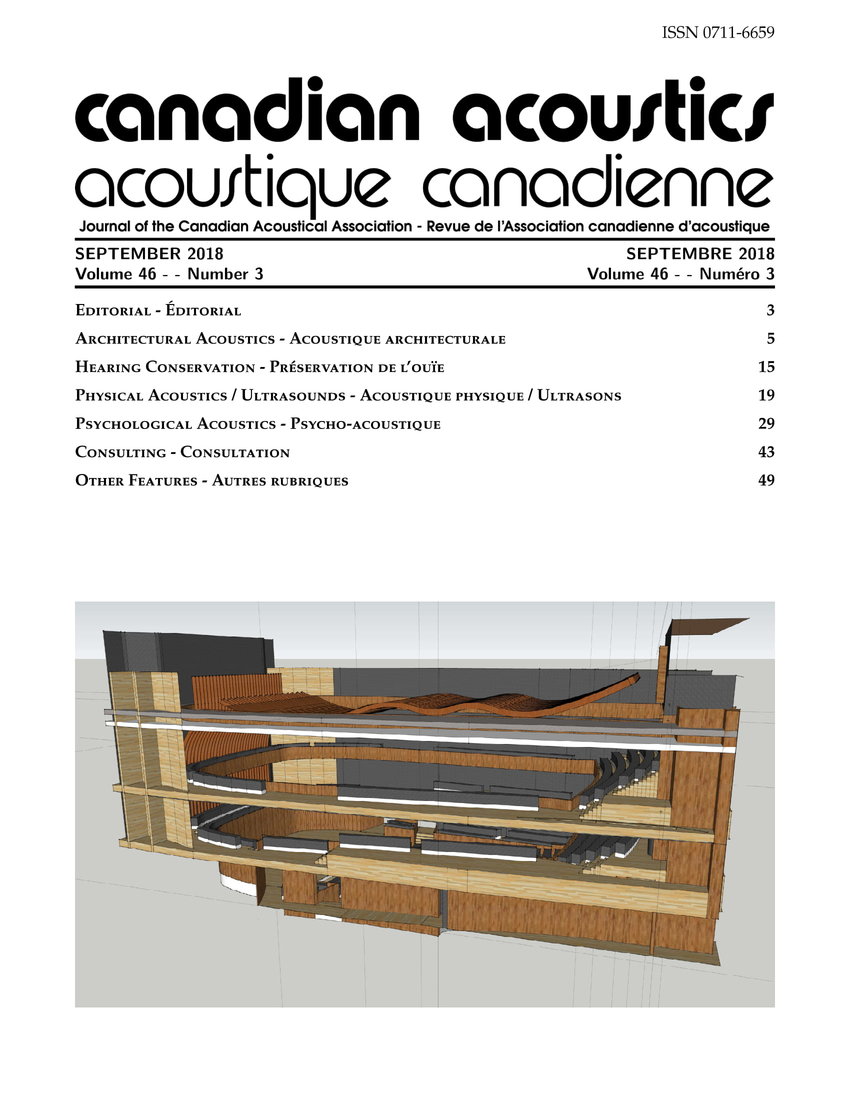Development Of A Method To Realize A Uniform Sound Field In Three- Dimensional Spaces Based On The Ray-Tracing Algorithm
Keywords:
diffusion, ray-tracing, largest Lyapunov exponent, Wolf algorithm, room acousticsAbstract
In this study, a method of mapping ray motions in three-dimensional geometrical spaces was theoretically established using the ray-tracing algorithm. The paths along which the acoustic ray propagates in enclosed rectangular and concave spaces are described according to the ray-tracing algorithm. The location and the direction of the acoustic ray at arbitrary points on the paths were explored. The largest Lyapunov exponents (LLEs) of the ray systems in the rectangular and concave spaces were determined using the Wolf algorithm based on the points on the propagation paths with equal length in the time series. A new chaotic concave geometry is produced with a positive LLE. The LLEs of ray dynamics between the two geometrical spaces were compared and the results showed that the ray moves in a regular fashion in the rectangular space with an LLE of 0 whereas the ray exhibits chaotic behavior in the concave space with a positive LLE. The acoustic fields in both of these spaces in were described by applying ray chaos to the building acoustics. The acoustic diffusion was evaluated based on the uniformity of the sound pressure levels at different positions in the sound field using Odeon room acoustics software. The results showed that the proposed model has the potential to simulate chaotic dynamics of acoustic rays in enclosed spaces.
Additional Files
Published
How to Cite
Issue
Section
License
Author Licensing Addendum
This Licensing Addendum ("Addendum") is entered into between the undersigned Author(s) and Canadian Acoustics journal published by the Canadian Acoustical Association (hereinafter referred to as the "Publisher"). The Author(s) and the Publisher agree as follows:
-
Retained Rights: The Author(s) retain(s) the following rights:
- The right to reproduce, distribute, and publicly display the Work on the Author's personal website or the website of the Author's institution.
- The right to use the Work in the Author's teaching activities and presentations.
- The right to include the Work in a compilation for the Author's personal use, not for sale.
-
Grant of License: The Author(s) grant(s) to the Publisher a worldwide exclusive license to publish, reproduce, distribute, and display the Work in Canadian Acoustics and any other formats and media deemed appropriate by the Publisher.
-
Attribution: The Publisher agrees to include proper attribution to the Author(s) in all publications and reproductions of the Work.
-
No Conflict: This Addendum is intended to be in harmony with, and not in conflict with, the terms and conditions of the original agreement entered into between the Author(s) and the Publisher.
-
Copyright Clause: Copyright on articles is held by the Author(s). The corresponding Author has the right to grant on behalf of all Authors and does grant on behalf of all Authors, a worldwide exclusive license to the Publisher and its licensees in perpetuity, in all forms, formats, and media (whether known now or created in the future), including but not limited to the rights to publish, reproduce, distribute, display, store, translate, create adaptations, reprints, include within collections, and create summaries, extracts, and/or abstracts of the Contribution.


